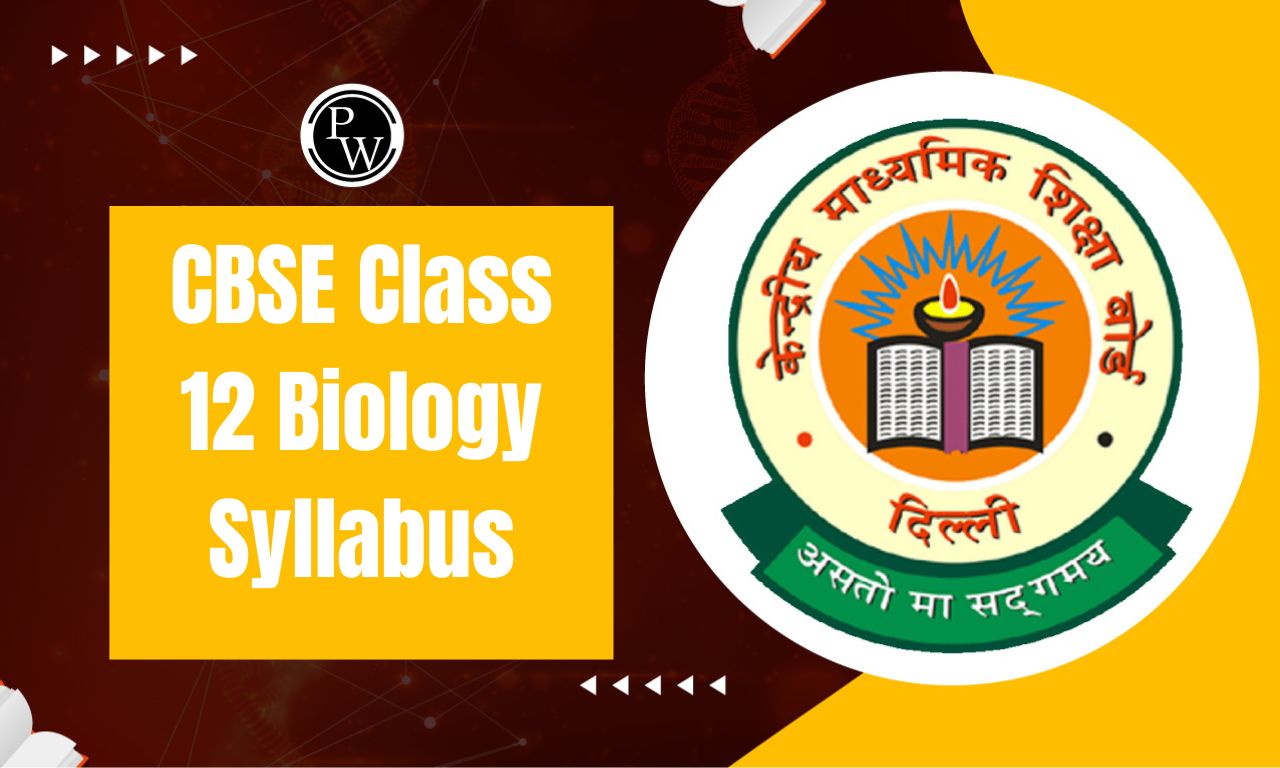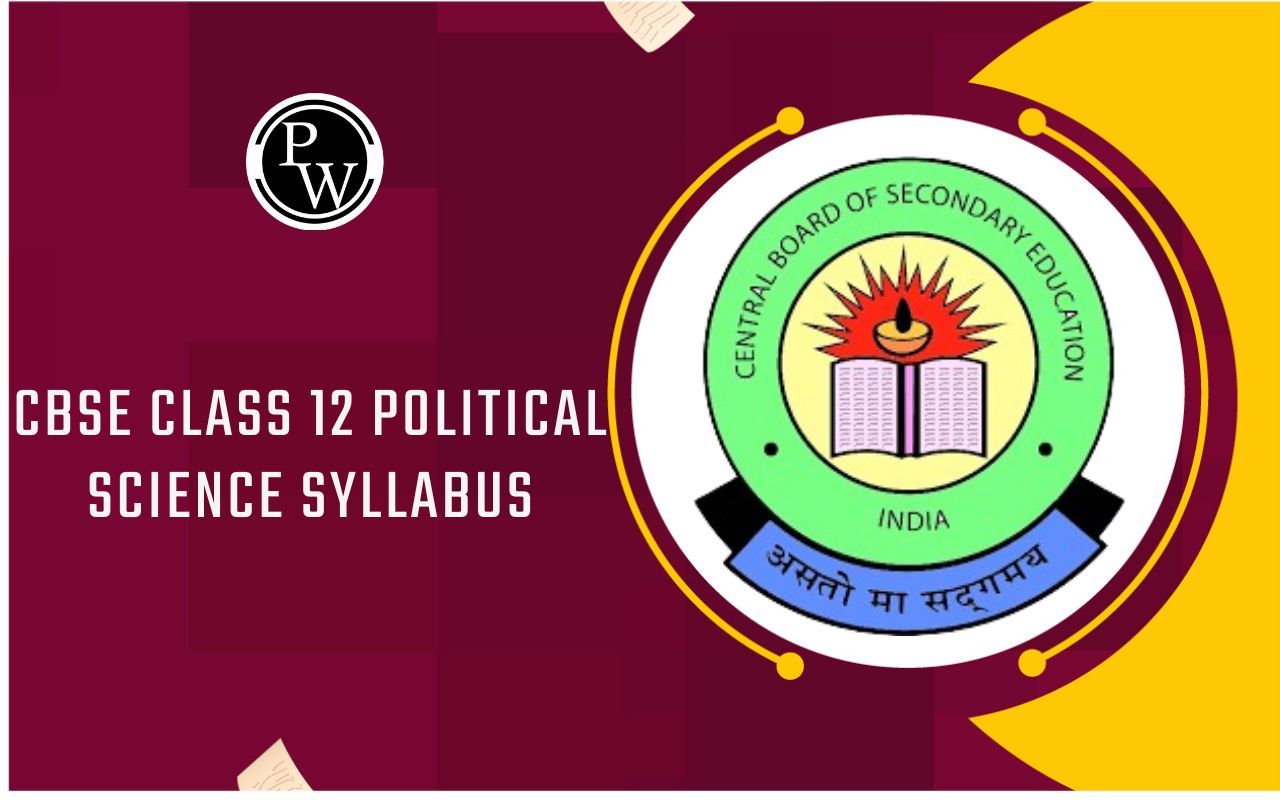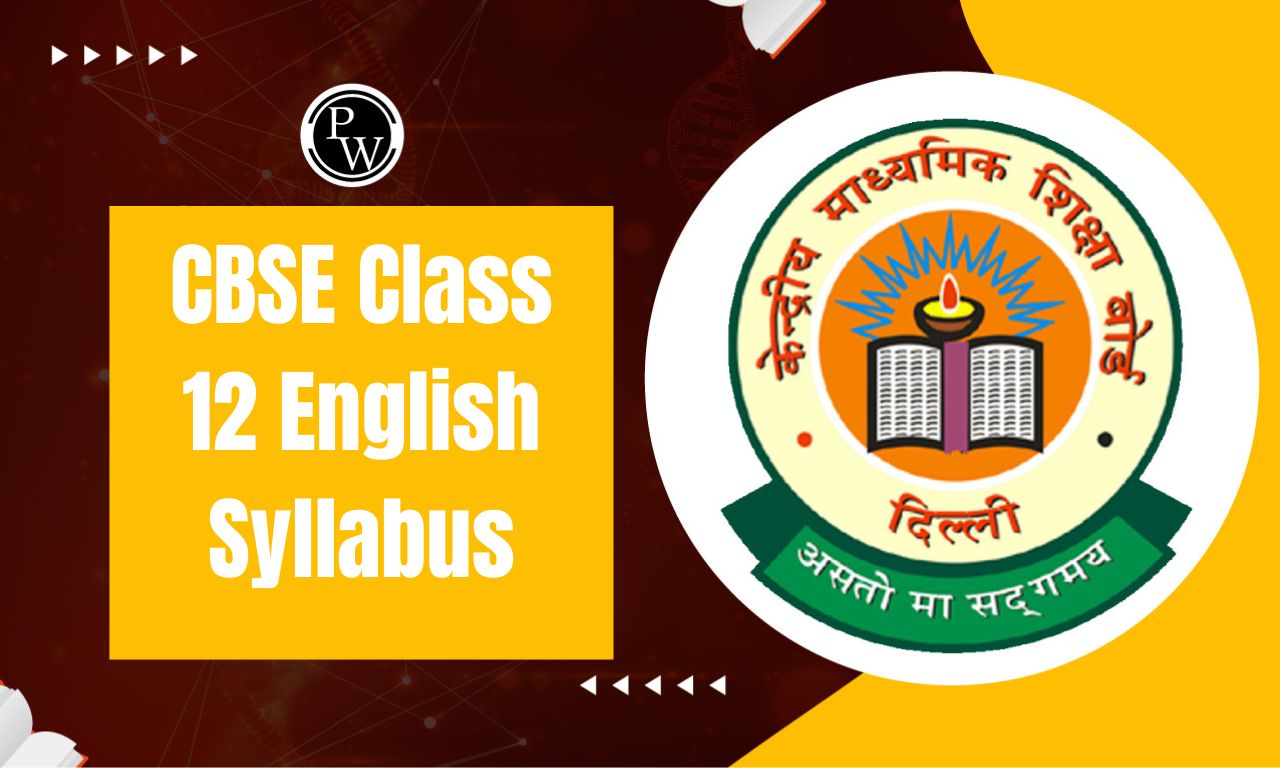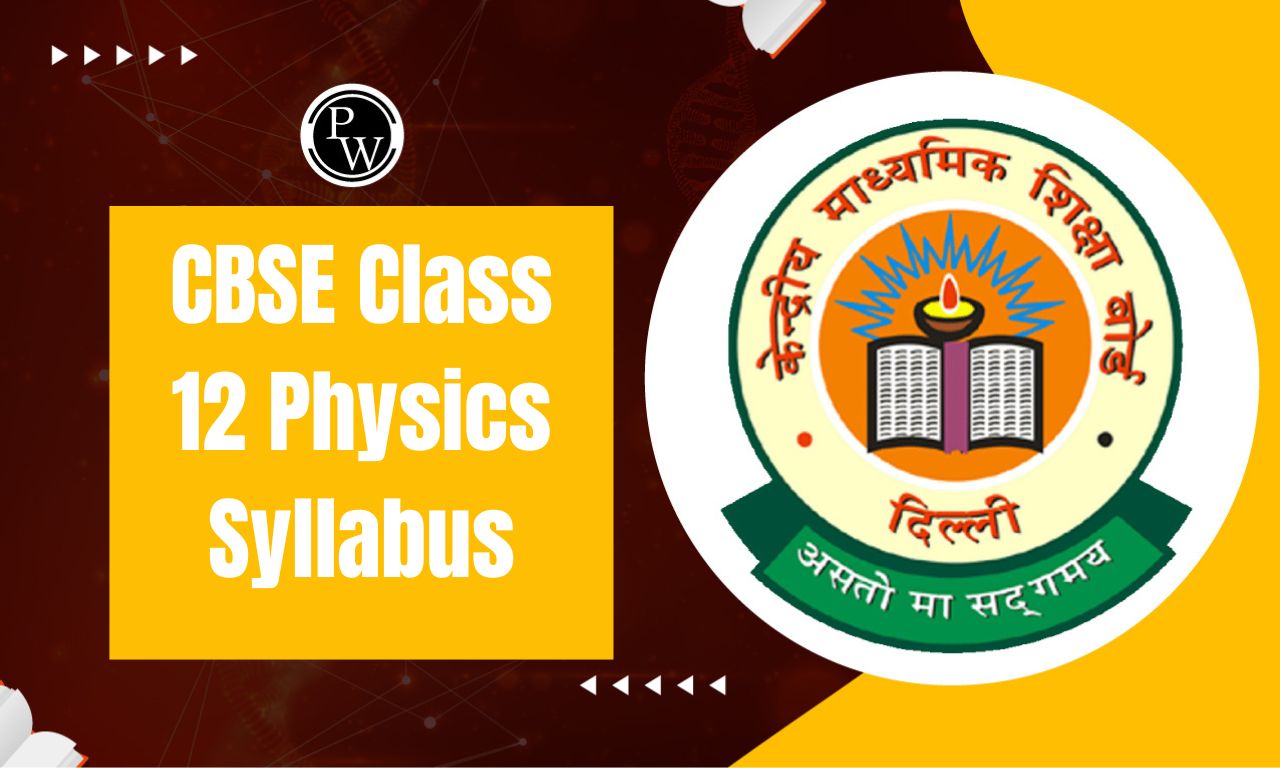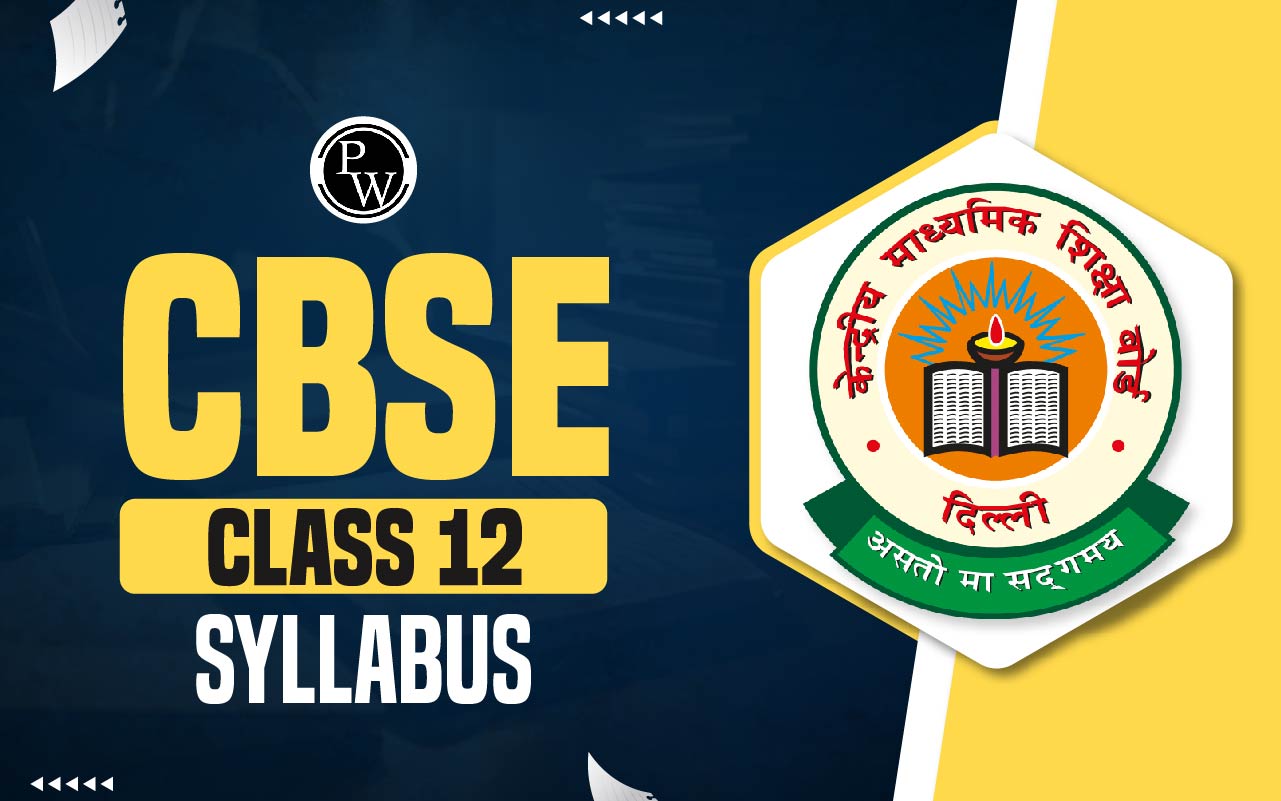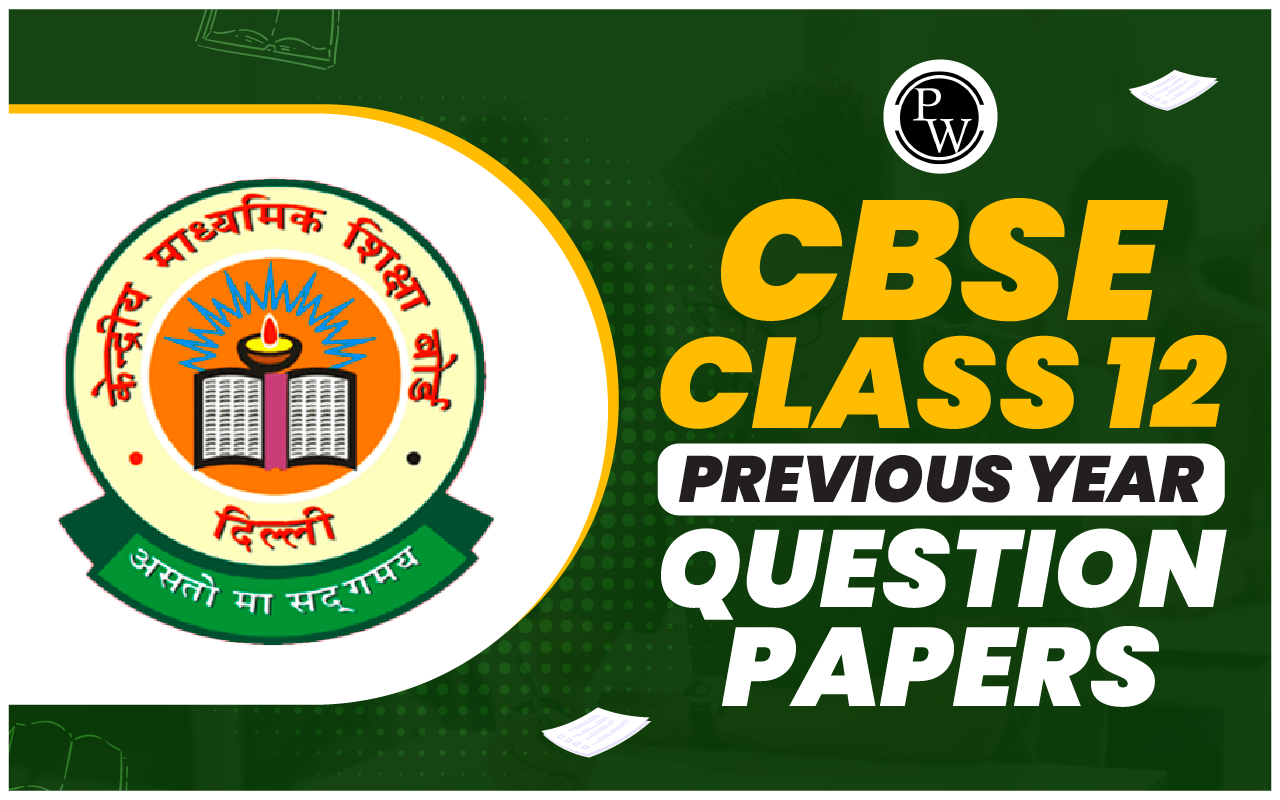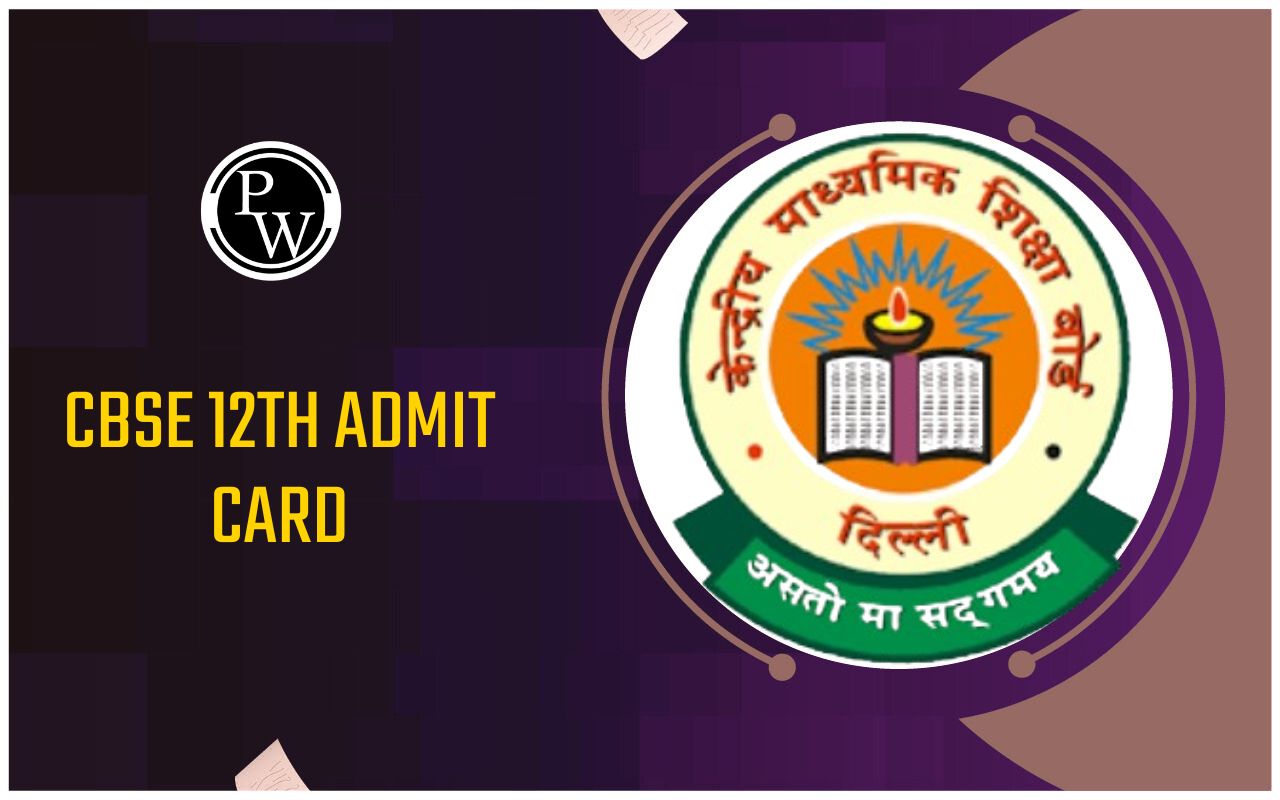
CBSE Class 12 Physics Answer Key 2024: Students who appeared for the CBSE Class 12 Physics (theory) examination held on March 4, 2024, can find answers to objective questions on this page. The exam lasted three hours, from 10:30 a.m. to 1:30 p.m. After that, the answer sheets were collected and students could leave the exam center.
Physics is considered as one of the difficult subject because of its many formulas and lengthy calculations. After the exam, students are eager to find the CBSE Class 12 Physics Answer Key 2024. To help with this, the Physics Wallah faculty has prepared an unofficial Class 12 Physics Answer Key 2024 for all sets, along with detailed explanations. Stay tuned to get the answer key for Class 12 Physics as soon as possible.CBSE Class 12 Physics Answer Key 2024
By using the Class 12 Physics Answer Key 2024, students can cross-check their responses to all the questions attempted in the exam and expect their grades. The Physics Class 12th Answer Key 2024 is available from our pros, saving students from having to go to other websites. We're the first ones to have the answer key for all sets, so make sure to save this page and check back regularly.CBSE Class 12 Maths Answer Key 2024
CBSE Class 12 Physics Answer Key 2024 Overview
Here is the overview of CBSE Class 12 Physics Answer Key 2024:| Board | CBSE |
|---|---|
| Subject | Physics |
| Subject Code | 041 |
| Class | 12 |
| Item | Syllabus |
| Marks Distribution |
Theory: 70
Practical: 30
|
| Total No of Chapters | 14 |
| Total No of Units | 9 |
| Theory Exam Day | Monday |
| Theory Exam Date | March 4, 2024 |
| Theory Exam Timings | 10:30 a.m. to 1:30 p.m. |
CBSE Class 12 Physics Answer Key 2024 Set 1
The CBSE Class 12th Physics Answer Key 2024 for Set 1 is shared below.
Question QP Code: 55/4/1
1. Two charges + q each are kept ‘2a’ distance apart. A third charge – 2q is placed midway between them. The potential energy of the system is-Answer: (C) -7q2 /8πε0a
2. Two identical small conducting balls and B2 are given -7 pC and + 4 B1 PC charges respectively. They are brought in contact with a third identical ball B3 and then separated. If the final charge on each ball is -2 pC, the initial charge on B3 wasAnswer:(B) – 3pC
3. The quantum nature of light explains the observations on the photoelectric effect as-Answer: (B) the maximum kinetic energy of photoelectrons depends only on the frequency of incident radiation.
4. The radius (rn) of nth orbit in Bohr model of hydrogen atom varies with nAnswer: (C) rn & n²
5. A straight wire is kept horizontally along east-west direction. If a steady current flows in wire from east to west, the magnetic field at a point above the wire will point towardsAnswer: (C) North
6. The magnetic susceptibility for a dismagnetic material isAnswer: (A) small and negative
7. A galvanometer of resistance 100 2 is converted into an ammeter of range (0-1 A) using a resistance of 0.1 Q. The ammeter will show full scale deflection for a current of aboutAnswer: (D) 0.1 A
8. A circular loop A of radius R carries a current L. Another circular loop B of radius r (= R/20) placed concentrically in the plane of A. The magnetic flux linked with loop B is proportional toAnswer: (C) R2/3
9. Figure shows the variation of inductive reactance X₁ of two ideal inductors of inductance L₁ and L₂ with angular frequency w. The value ofAnswer: (C) 3
10. The phase difference between electric field vec E and magnetic field vec B in an electromagnetic wave propagating along z-axis isAnswer: (A) Zero
11. A coil of N turns is placed in a magnetic field such that B is perpendicular to the plane of the coal vec R changes with time as B=B0 cos (2πt/T) where T is time period. The magnitude of emf induced in the coil will be maximum atAnswer: (C) t = nT/2
12. In Balmer series of hydrogen atom, as the wavelength of spectral lines decreases, they appearAnswer: (B) further apart and stronger in intensity.
13. Assertion (A): Electrons are ejected from the surface of zinc when it is irradiated by yellow light. Reason (R): Energy associated with a photon of yellow light is more than the work function of zinc.Answer:(C) If Assertion (A) is true and Reason (R) is false.
14. Assertion (A): The temperature coefficient of resistance is positive for metals and negative for p-type semiconductors. Reason (R): The charge carriers in metals are negatively charged, whereas the majority charge carriers in p-type semiconductors are positively charged.Answer: (A) If both Assertion (A) and Reason (R) are true and Reason (R) is the correct explanation of Assertion (A).
15. Assertion (A): When electrons drift in a conductor, it does not mean that all free electrons in the conductor are moving in the same direction. Reason (R): The drift velocity is superposed over large random velocities of electrons.Answer:(A) If both Assertion (A) and Reason (R) are true and Reason (R) is the correct explanation of Assertion (A).
16. Assertion (A): In interference and diffraction of light, light energy reduces in one region producing a dark fringe. It increases in another region and produces a bright fringe.Reason (R): This happens because energy is not conserved in the phenomena of interference and diffraction.
Answer: (B) If both Assertion (A) and Reason (R) are true and Reason (R) is the correct explanation of Assertion (A).Physics Set 3 Answer Key 2024
Physics Set 3 Answer Key 2024 for Question QP Code: -55/2/3
The CBSE Class 12 Physics Set 3 Answer Key 2024 is shared below.
Section A
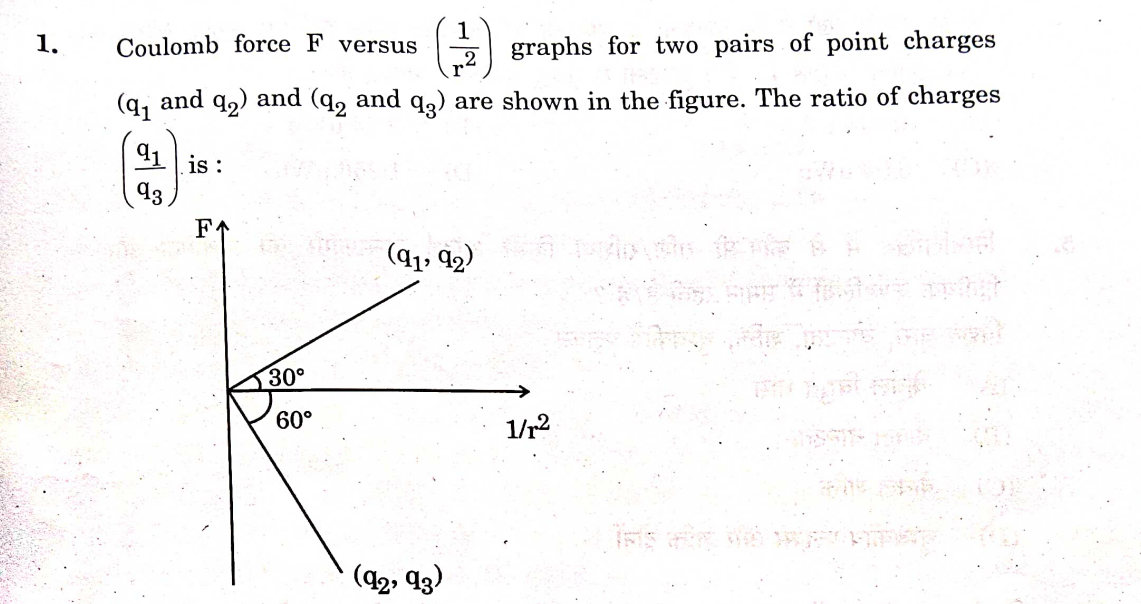 (A) √3
(B) 1 / √3
(C) 3
(D) 1/ 3
(A) √3
(B) 1 / √3
(C) 3
(D) 1/ 3
Answer: (D) 1/ 3
2. Electrons drift with speed va in a conductor with potential difference V across its ends. If V is reduced to 2 their drift speed will become : (A) Vd/ 2 (C) 2 vd (B) vd (D) 4 vdAnswer: (A) Vd/ 2
3. The emf induced in a coil rotating in a magnetic field does not depend upon the following: (A) Area of the coil (B) Resistance of the coil (C) Number of turns in the coil (D) Angular speed of rotation of the coilAnswer: (B) Resistance of the coil
4. A circular coil of radius 10 cm is placed in a magnetic field B = (1.01 +0.5 j) mT such that the outward unit vector normal to the surface of the coil is (0.61 +0.8). The magnetic flux linked with the coil is: (A) 0.314 µWb (B) 3.14 µWb (C) 31.4 µWb (D) 1.256 µWbAnswer:
5. Which of the following quantity/quantities remains same in primary and secondary coils of an ideal transformer? Current, Voltage, Power, Magnetic flux (A) Current only (B) Voltage only (C) Power only (D) Magnetic flux and Power bothAnswer: (D) Magnetic flux and Power both
6. In an ac circuit, the instantaneous values of current (in A) and voltage (in V) are I = 5 sin ot and E = 200 cos (ot+) respectively. The phase 3 difference between voltage and current at any instant is: (A) 5π/ 6 (C) 5π/ 2 (B) 5π/ 4 (D) 3π/ 2Answer: (A) 5π/ 6
7. In four regions I, II, III and IV, the magnetic field is given by: I. By = Bo sin kz II. By = Bo cos kz III. By = Bo sin (kz – wt) IV. By = Bo sin kz + Bo cos kz The electromagnetic wave will exist in the region : (A) IV (B) I (C) III (D) IIAnswer: (C) III
8. The momentum (in SI units) associated with a photon of energy 1.5 eV is: (A) 4 x 10-27 (B) 8 × 10-28 (C) 2 × 10-30 (D) 6 × 10-29Answer:
9. An n-type semiconducting Si is obtained by doping intrinsic Si with : (A) Al (B) B (C) P (D) InAnswer: (C) P
10.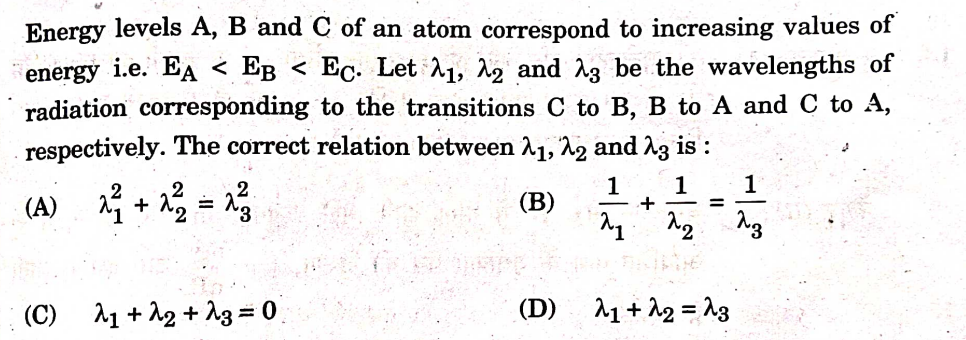 Answer:
11. When a p-n junction diode is subjected to reverse biasing:
(A) the barrier height decreases and the depletion region widens.
(B) the barrier height increases and the depletion region widens.
(C) the barrier height decreases and the depletion region shrinks.
(D) the barrier height increases and the depletion region shrinks.
Answer:
11. When a p-n junction diode is subjected to reverse biasing:
(A) the barrier height decreases and the depletion region widens.
(B) the barrier height increases and the depletion region widens.
(C) the barrier height decreases and the depletion region shrinks.
(D) the barrier height increases and the depletion region shrinks.
Answer: (B) the barrier height increases and the depletion region widens.
12. An alpha particle approaches a gold nucleus in Geiger-Marsden experiment with kinetic energy K. It momentarily stops at a distance d from the nucleus and reverses its direction. Then d is proportional to: (A) 1/ √k (B) √k (D) K (C) 1/ KAnswer: (C) 1/ K
13. Assertion (A): An electron and a proton enter with the same momentum p in a magnetic field B such that p1 B. Then both describe a circular path of the same radius. Reason (R): The radius of the circular path described by the charged particle (charge q, mass m) moving in the magnetic field Bis given by r = mv/ qBAnswer: (A)
14. Assertion (A): The magnifying power of a compound microscope is negative. Reason (R): The final image formed is erect with respect to the object.Answer: (C)
15. Assertion (A): ‘Lenz’s law is a consequence of the law of conservation of energy. Reason (R): There is no power loss in an ideal inductor.Answer: (B)
16. Assertion (A): Photoelectric current increases with an increase in intensity of incident radiation, for a given frequency of incident radiation and the accelerating potential. Reason (R): Increase in the intensity of incident radiation results in an increase in the number of photoelectrons emitted per second and hence an increase in the photocurrent.Answer: (A)
SECTION B
17. An electric field E is maintained in a wire of length ‘l’ and area of A cross-section ‘a’. Derive the relation between the current density ‘o’ in the wire and the electric field E. 18. How does the energy gap of an intrinsic semiconductor effectively change when doped with a (a) trivalent impurity, and (b) pentavalent impurity? Justify your answer in each case. 19. (a) Two waves, each of amplitude ‘a’ and frequency ‘w’ emanating from two coherent sources of light superpose at a point. If the phase difference between the two waves is o, obtain an expression for the resultant intensity at that point. OR (b) What is the effect on the interference pattern in Young’s double-slit experiment when (i) the source slit is moved closer to the plane of the slits, and (ii) the separation between the two slits is increased? Justify your answers. 20. In Bohr model of hydrogen atom, find the ratio of period of revolution of the electron in the orbit n = 2 to that in the orbit n = 1. 21. A convex lens (n = 1.52) has a focal length of 15.0 cm in air. Find its focal length when it is immersed in liquid of refractive index 1.65. What will be the nature of the lens ?Physics Answer Key 2024 Set 2
Q.P. Code 55/5/2
Section A
1. A battery supplies 0.9 A current through a 2 Ω resistor and 0.3 A current through a 7 Ω resistor when connected one by one. The internal resistance of the battery is: A. 2Ω B. 1.2Ω C. 1Ω D. 0.5ΩAnswer: D. 0.5Ω
2. A particle of mass m and charge q describes a circular path of radius R in a magnetic field. If its mass and charge were 2 m and q/2 respectively, the radius of its path would be: A. R/4 B. R/2 C. 2R D. 4RAnswer: C. 2R
3. Which of the following pairs is that of paramagnetic materials? (A) Copper and Aluminium (B) Sodium and Calcium (C) Lead and Iron (D) Nickel and CobaltAnswer: (D) Nickel and Cobalt
4. A galvanometer of resistance 50 Ω is converted into a voltmeter of range (0 – 2V) using a resistor of 1.0 kΩ. If it is to be converted into a voltmeter of range (0 – 10 V), the resistance required will be (A) 4.8 kΩ (B) 5.0 kΩ (C) 5.2 kΩ (D) 5.4 kΩAnswer: (C) 5.2 kΩ
5. Two coils are placed near each other. When the current in one coil is changed at the rate of 5 A/s, an emf of 2 mV is induced in the other. The mutual inductance of the two coils is A. 0.4 mH B. 2.5 mH C. 10 mH D. 2.5 HAnswer: A. 0.4 mH
6. The electromagnetic waves used to purify water are A. Infrared rays B. Ultraviolet rays C. X-rays D. Gamma raysAnswer: B. Ultraviolet rays
7. The focal lengths of the objective and the eyepiece of a compound microscope are 1 cm and 2 cm respectively. If the tube length of the microscope is 10 cm, the magnification obtained by the microscope for most suitable viewing by relaxed eye is: (A) 250 (B) 200 (C) 150 (D) 125 8. The variation of the stopping potential (Vo) with the frequency (u) of the incident radiation for four metals A, B, C and D is shown in the figure. For the same frequency of incident radiation producing photo-electrons in all metals, the kinetic energy of photo-electrons will be maximum for metal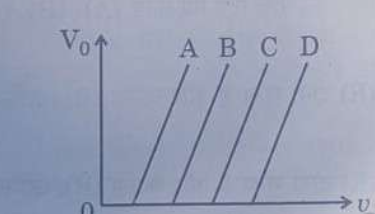 (A) A
(B) B
(C) C
(D) D
(A) A
(B) B
(C) C
(D) D
Answer:
9. The energy of an electron in the ground state of hydrogen atom is -13.6 eV. The kinetic and potential energy of the electron in the first excited state will be (A) -13.6 eV, 27.2 eV (B) -6.8 eV, 13,6 eV (C) -3.4 eV, -6.8 eV (D) 6.8 eV, -3.4 eVAnswer:
10. A Young’s double-slit experimental set up is kept in a medium of refractive index (4/3). Which maximum in this case will coincide with the 6th maximum obtained if the medium is replaced by air (A) 4th (B) 6th (C) 8th (D) 10th 11. The potential energy between two nucleons inside a nucleus is minimum at a distance of about (A) 0.8 fm (B) 1.6 fm (C) 2.0 fm (D) 2.8 fm 12. A pure Si crystal having 5 x 1028 atoms m³ is dopped with 1 ppm concentration of antimony. If the concentration of holes in the doped crystal is found to be 4.5 x 109 m-3, the concentration (in m³) of intrinsic charge carriers in Si crystal is about (A) 1.2 × 1015 (C) 3.0 x 1015 (B) 1.5 x 1016 (D) 2.0 × 1016| CBSE Class 12 Biology Answer Key 2024 | CBSE Class 10 Science Answer Key 2024 |
| CBSE Class 10 Maths Answer key | CBSE Class 12 Psychology Answer key 2024 |
Class 12 Physics Answer Key 2024: Marking Scheme
When reviewing the Class 12 Physics Answer Key 2024, it's crucial to grasp the marking scheme. The CBSE Class 12 Physics Board Paper 2024 carries 70 marks and spans three hours. Students are allotted an additional 15 minutes to review the question paper. The CBSE Class 12 Physics exam comprises 32 questions divided into five sections: Section A, Section B, Section C, Section D, and Section E. Below is a table displaying the distribution of marks in each section:| Sections | Number of Questions | Marks Allotted |
|---|---|---|
| Section A | 16 (12 MCQs and 4 Assertion Reasoning) | 1 x 16 = 16 |
| Section B | 5 Questions | 5 x 2 = 10 |
| Section C | 7 Questions | 7 x 3 = 21 |
| Section D | 2 Case Study-Based Questions | 2 x 4 = 8 |
| Section E | 3 Long Answer Questions | 3 x 5 = 15 |
CBSE Class 12 Physics Board Paper 2024 PDF Download
You can download the CBSE Class 12 Physics Board Paper 2024 PDF from the links provided below:| CBSE Class 12 Physics Board Question Paper 2024 | PDF Download |
|---|---|
| CBSE 12 Physics Question Papers 2024 - Set 1 | Download Now |
| CBSE 12 Physics Question Papers 2024 - Set 2 | Download Now |
| CBSE 12 Physics Question Papers 2024 - Set 3 | Download Now |
CBSE Class 12 Physics Answer Key 2024 FAQs
Where can I find the CBSE Class 12 Physics Answer Key 2024?
Why is the CBSE Class 12 Physics Answer Key 2024 important?
When will the CBSE Class 12 Physics Answer Key 2024 be released?
What is the subject code of CBSE Class 12th Physics?

